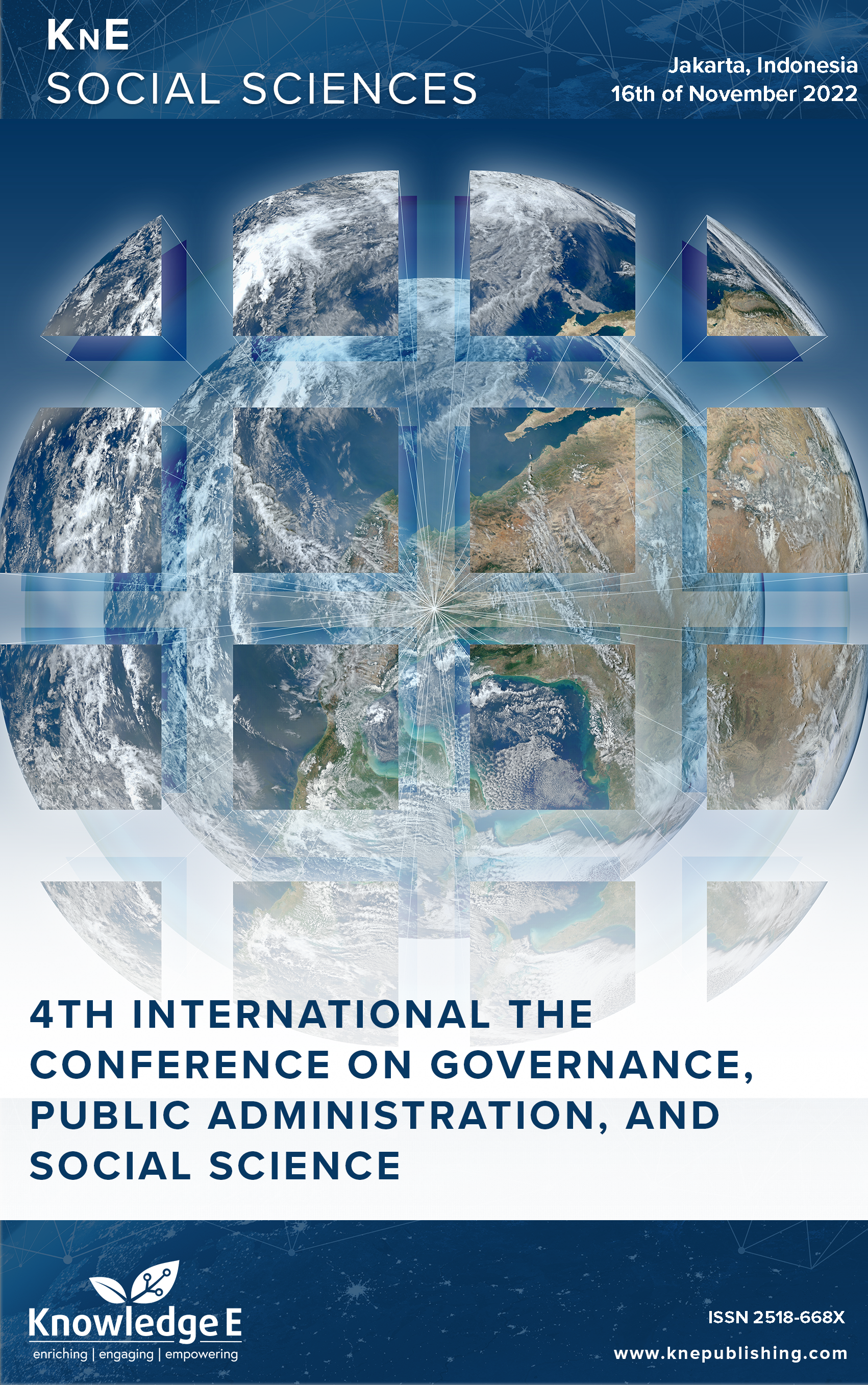Digitalization of Green Economy Policy Model in Provincial Government
DOI:
https://doi.org/10.18502/kss.v8i11.13567Abstract
Most of the development has only focused on increasing economic productivity without looking at the impacts, namely environmental damage and increasing poverty levels. This study aims to analyze the extent to which public officials understand the Green Economy Policy, identify its design at three levels of the leadership, and to analyze this digitalization model that can increase the levels of awareness. The method used in this research is descriptive and qualitative with an ex-post analysis technique toward green economy policies implemented through green growth education and training curricula. Based on the data obtained, this study found that public officials in the Government of East Kalimantan Province have an awareness of the importance of green policies. However, no differences were observed in the design of the development policy model at each leadership levels. In addition, the internalization of the Green Economy Policies remains partial at a certain level due to limitations in its implementation strategy. Thus, this study recommends the need for a clear focus on the implementation of Green Economy Policy models at each leadership level as well as the internalization of digital-based Green Economy Policies in order to reach wider and faster policy targets.
Keywords: pro green policy, level of awareness, development policy model
References
[2] Indonesia CN. 27 Agustus 2019. 10 Isu Lingkungan di Kalimantan Timur, Sang Ibu Kota Baru, https://www.cnnindonesia.com/teknologi/20190827164356-199- 425086/10-isu-lingkungan-di-kalimantan-timur-sang-ibu-kota-baru/ (akses 8 Oktober 2022).
[3] Anderson ZR, Kusters K, Mc Charty J, Obidzinski K. Green growth rhetoric versus reality: insights from Indonesia. Glob Environ Change. 2016;38:30–40.
[4] Swainson L, Mahanty S. Green economy meets political economy: Lessons from the “Aceh Green” initiative, Indonesia. Glob Environ Change. 2018;53:286–295.
[5] GGGI. 2016. Increasing the literacy on sustainable development and climate finance with journalists and media. https://gggi.org/increasing-the-literacy-onsustainable- development-and-climate-finance-with-journalists-and-media/ (akses 15 Maret 2022).
[6] Annual Report UN. 2011. Published by United Nation Environment Programme access www.unep.org/annual report. 2012.
[7] Voumik LC. Economy in the context of sustainable development and poverty eradication: What are the implications for Bangladesh? J Econ Sustain Dev. 2014;5(3).
[8] UCLG (United Cities and Local Governments). Tujuan Pembangunan Berkelanjutan Yang Perlu Diketahui Oleh Pemerintah Daerah, https://hariannusa.com/2020/11/06/membangun-ekonomi-ntb-tanpamerusak- lingkungan/ (akses 10 Maret 2022).
[9] Zahari & Sudirman. 2020. Green Ekonomi, Universitas Batanghari. https://www.republika.co.id/berita/pi2of7430/kerusakan-hutan-jadi masalah serius-ntb (akses 10 Maret 2022).
[10] Moleong LJ. Metodologi Penelitian Kualitatif. Bandung: Remaja Rosdakarya; 2007.
[11] Patton, Sawicki, Clark. Basic methods of policy analysis and planning. New York: Routledge; 2016.

